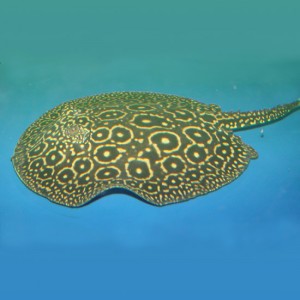Evolutionary and Adaptive Biochemistry Lab
Research in the Ballantyne Lab
Our research spans basic and applied interests. The common themes are my focus on the comparative and adaptive biochemistry of aquatic organisms. The following are current interests.
Nitrogen metabolism in fish, corals and molluscs.
Using the stable isotope tracer technologies (liquid chromatography, electrospray mass spectrometry) we are examining many aspects of nitrogen metabolism. These include aestivating tropical species such as lungfish, marine and freshwater elasmobranchs and ammonia tolerant species (swamp eels) and symbiotic associations (corals and giant clams).
Lipid and Ketone body metabolism in fish and molluscs.
We are interested in the various roles and importance of ketone bodies in animals. We have established that two tissue specific forms of the enzyme exist in molluscs and fish with differing isomeric specificity. While terrestrial and freshwater molluscs have a well developed ketone body metabolism, marine molluscs do not express the terminal enzyme in the pathway (b-hydroxybutyrate dehydrogenase). Our work in this area involves establishing the role of ketone bodies in mollusks, marine and fresh water elasmobranchs and anoxia tolerant fish.
Biochemistry of Environmental Adaptation.
Membrane adaptation to solute systems
We interested in adaptation of membranes of elasmobranch fishes (sharks, skates and rays) to the high level of urea and methylamines found in their tissues. We have shown that elasmobranch mitochondrial and gill membranes are unusual in their phospholipid and fatty acid composition and have examined how solutes may affect these membranes. We are also examining how the gills and kidneys of sharks and rays are adapted to retain urea. As the most important osmotically active particle in marine sharks and rays, urea retention plays an important role in the energetics of these fishes. Our research focuses on the membrane structure and the function of the urea transporters of the gills and kidneys of marine and freshwater elasmobranchs. Of particular interest is the role of cholesterol in mediating changes in membrane structure and function.
Metabolic arrest in estivation
The profound metabolic arrest experienced by terrestrial snails when deprived of water and food is accompanied by equally substantial changes in mitochondrial membrane structure and function. We are interested in the mechanisms involved in membrane modification to permit these organisms to survive such harsh conditions in a state of metabolic arrest. We are now examining the metabolic and membrane associated changes induced by estivation in African lungfish. These studies involve determination of changes in membrane structure and function and analysis of metabolic reorganization of enzyme systems.
Salinity adaptation
We are interested in the metabolic and membrane changes associated with salinity adaptation in molluscs and fish. Membrane structural modifications may play an important role in mediating the function of membrane-associated proteins. Our studies include investigations of anadromous Arctic char from the Canadian Arctic as well as brackish and freshwater water stingrays from Southeast Asia. We are also examining the differences in osmoregulatory ability of various salmonids. These studies include determination of expression of isoforms of Na+/K+ ATPase in gills of Atlantic salmon, Arctic char and rainbow trout.
The evolution of metabolism.
We have a substantial interest in the basis for differences in metabolic organization of animals. In some cases these differences have a basis in environmental adaptation while in others the evolutionary history of the organism may be an important determinant of its metabolic organization. By working on organisms representative of key evolutionary groups it is possible to dissect out some of the factors constrained by evolutionary history. We have worked on most of the most primitive aquatic vertebrates (hagfish, lamprey, elasmobranchs, lungfish, bowfins, sturgeon, gars) as well as more advanced teleosts.
The metabolism of elasmobranch fishes differs substantially from that of virtually all other vertebrates due to the need to synthesize substantial amounts of urea for osmotic support. One manifestation of this is a reduced reliance on lipid substrates and increased reliance on ketone bodies. We are examining aspects of the role of glutamine in elasmobranch metabolism and its interaction with lipid and ketone body metabolism.
We have investigated various aspects of the metabolism of marine, freshwater and terrestrial mollusks with the goal of establishing phylogenetic and environmentally based trends. These include studies of lipid, amino acids and ketone body metabolism.
